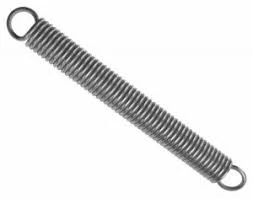
- Mobile Phone
- +8613931874955
- sales@cntcmetal.com
Exploring Various Types of Coil Springs for Different Applications and Uses
Different Types of Coil Springs An Overview
Coil springs are essential components in various mechanical systems, providing support, flexibility, and shock absorption. These springs are typically made from coiled wire, and their design allows them to store potential energy and release it when needed. Understanding the different types of coil springs can aid engineers and designers in selecting the right spring for specific applications in industries ranging from automotive to aerospace and manufacturing.
1. Compression Springs
Compression springs are designed to resist compressive forces. They can be found in applications where a force is applied to shorten the spring. These springs are usually cylindrical in shape but can also come in conical or oval forms. Their primary function is to store energy and provide resistance to a compressive load. Compression springs are commonly used in automotive suspensions, mattresses, and various machinery to absorb shocks and stabilize components.
2. Tension Springs
Tension springs work in the opposite manner to compression springs. They are designed to absorb and store energy when a pulling force is applied. Tension springs are typically coiled with a hook or looped ends to facilitate attachment to other components. When the force is withdrawn, they return to their original length. These springs are widely utilized in applications such as retractable pens, door closures, and various machinery where components need to be pulled together.
Torsion springs are unique as they store energy when twisted. They are designed to resist rotational forces, providing a torque rather than a linear force. Torsion springs are commonly found in devices that require a rotational motion, such as clothespins, rotary mechanisms, and certain types of automotive components. They usually have a helical shape and can come in various configurations to suit different torque needs.
different types of coil springs

4. Extension Springs
Similar to tension springs, extension springs are designed to handle tensile loads. However, they have a different construction; they are generally longer and thinner, allowing them to stretch. Extension springs are equipped with hooks or loops at both ends, facilitating their attachment to other components. They are primarily used in applications such as trampolines, garage doors, and various machinery where space constraints necessitate a more elongated spring.
5. Belleville Washers (Disc Springs)
Belleville washers, or disc springs, are a specific type of coil spring that uses a conical shape to provide high spring force in a compact design. They are employed in applications where space is limited, yet a substantial force is required. These washers can be stacked to achieve varying spring rates and are often utilized in automotive suspension systems and precision machinery, providing effective preload and vibration damping.
6. Specialty Springs
In addition to the common types mentioned above, numerous specialty coil springs exist to serve unique applications. These can include variable rate springs, which change their stiffness based on load, and flat wire springs, which offer distinct mechanical advantages in specific designs. Specialty springs often find their applications in industries such as aerospace, medical devices, and electronic equipment.
Conclusion
Understanding the different types of coil springs is crucial for anyone involved in mechanical design and engineering. Each type of spring serves a specific purpose and is tailored to meet the demands of various applications. From compression springs that absorb shocks to torsion springs that manage torque, the versatility of coil springs allows for their widespread use in countless industries. By selecting the appropriate type of coil spring, engineers can enhance the functionality, efficiency, and longevity of their designs. Thus, a deep knowledge of these springs not only aids in creating robust mechanical systems but also contributes to innovative design solutions across various fields.
share:
-
Wall Ties for Concrete: Invisible Guardians of Building Structural StabilityNewsAug.08,2025
-
Timber Frame Wall Ties: Stable Bonds for Load TransmissionNewsAug.08,2025
-
Stainless Steel Woven Wire Mesh: A versatile material from boundary protection to functional supportNewsAug.08,2025
-
Powder Coat Coil Springs: Creating peace of mind and reliability with sturdy protectionNewsAug.08,2025
-
Floor Standing Sign Holder: A Powerful Assistant for Flexible DisplayNewsAug.08,2025
-
Binding Iron Wire: An Invisible Bond for Building StabilityNewsAug.08,2025
-
Yard Sign Stakes: Reliable Guardians of Outdoor SignsNewsAug.04,2025



















